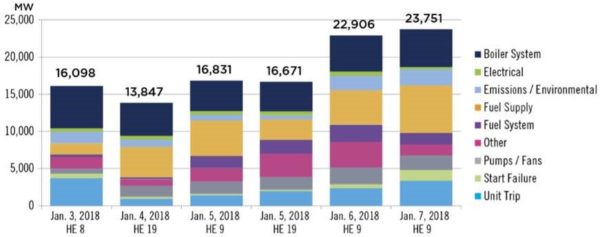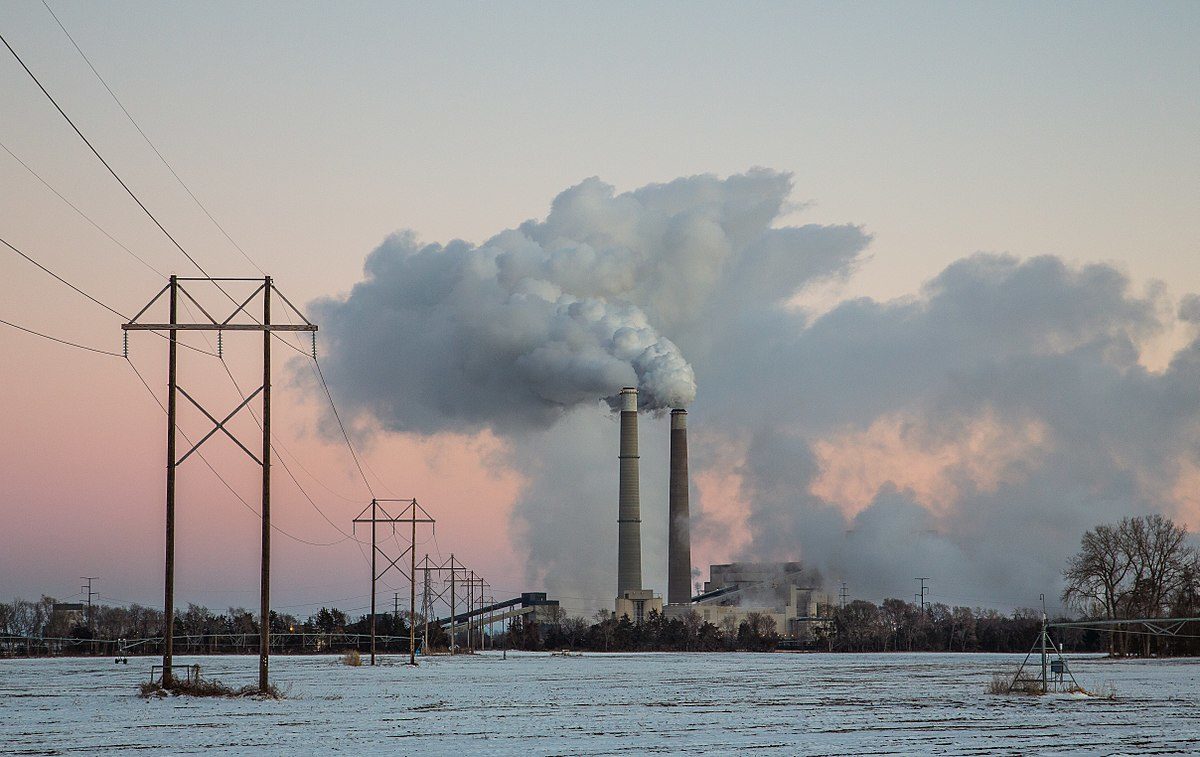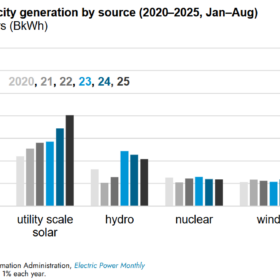The threat of blackouts and power rationing has been repeatedly summoned by opponents of renewable energy, including power companies who own conventional generation. More recently, entities who are heavily invested in coal and nuclear power have repeatedly attempted to claim that such generation is necessary for reliability, as a means to secure bailouts for units that are in danger of retirement as the nation’s power supply shifts from coal to gas, wind and in some states solar.
As the latest of these, today FirstEnergy Corporation sent a letter to Energy Secretary Perry making a plea for the Department of Energy (DOE) to use its authority under Section 202 of the Federal Power Act to create an open-ended bailout for coal and nuclear units in the PJM Interconnection grid, including those that it indirectly owns in Ohio and Pennsylvania.
The 33-page letter notes that over 11 GW of coal-fired power plants have closed in PJM’s 13-state + Washington DC footprint, and warns that another 11 GW of coal and nuclear plants could close “in the very near future”, absent “immediate and decisive” action by DOE.
Reliability and resilience myths
The dangers that FirstEnergy warns of regarding this switch from coal to gas are largely a rehashing of the same myths that were presented by Secretary Perry in his attempt to ram a bailout for nuclear and coal plants through the Federal Energy Regulatory Commission (FERC). This includes the wholly unsupported claim that plants with large supplies of fuel were somehow necessary for reliability. This effort was rejected by FERC, and the claims underlying it have been repeatedly disproven by energy experts.
The letter also cites a recent report by the DOE’s National Energy Technology Laboratory Laboratory, dealing with the performance of coal and nuclear power plants during recent cold snaps in the Northeast, which found that coal units in PJM were “uniquely positioned” to provide resilience.
However, critics are not convinced. Sustainable FERC, a project of environmental groups including Natural Resources Defense Council, states that the report employs a “flawed metric of resilience” that does not show performance, but instead which generators were most expensive. Sustainable FERC further notes that equipment issues, not fuel shortage, have been responsible for most blackouts to date.

Bailouts and power markets
The bailout being asked for here is significant. FirstEnergy is asking for no less than “full recovery of its fully allocated costs and a fair return on equity. The compensable costs used to establish this amount shall include, but are not necessarily limited to, operating expenses, costs of capital and debt, and a fair return on equity and investment.”
Such an open-ended bailout is similar to what Secretary Perry sought from FERC through the Grid Resiliency Pricing Rule, which drew objections from no less than eight former commissioners at FERC, who warned that such an action would severely undermine wholesale power markets.
Energy Innovation has stated that a Section 202 intervention could cause similar problems, including increased prices for consumers. Energy Innovation Electricity Policy Manager Mike O’Boyle has warned pv magazine of “billions of dollars of increased cost for unneeded capacity that further surpasses market prices”. Additionally, Energy Innovation says that the use of Section 202 in this manner could affect the market for demand response.
The proposal has already drawn fire from clean energy groups, with Advanced Energy Economy calling it an “outrageous attempt to evade established market procedures”.
However, anything is possible under a DOE run by Rick Perry, who has used the agency to defy both fact and market forces in an ideological defense of coal and nuclear power.
And while First Energy has made many unsupported claims about reliability, the real danger may be to its pocketbook. As noted in the filing, First Energy Solutions, the company’s wholesale power arm, plans to file for bankruptcy – and is willing to upend power markets to save its investment.
“FirstEnergy is asking the Secretary of Energy to exercise authority that is reserved for an emergency threatening national security just to salvage power plants that are losing money for their owners and costing money for consumers,” notes AEE Senior VP of Policy Malcolm Woolf.
Legal challenges
In addition to the flawed reasoning underlying this rule, there are also concerns about the legality of using Section 202 to address changes to the generation mix.
University of Richmond Law Professor Joel Eisen notes that the authority to require plants to run under Section 202 is “extremely limited”, as defined by both the law itself and previous court rulings. “This definition of ’emergency’ is narrow,” notes Eisen. “It focuses on wartime, natural disasters, and similar emergencies.”
Many of the times that the act has been used in the past 20 years have been national disasters or regional problems, and the law has yet to be used to address market issues.
Ari Peskoe, the director of the electricity law initiative at Harvard Law School, has also expressed concerns about this use of Section 202. “I think it is not going to hold up in court,” Peskoe told pv magazine. “The words of the law itself, DOE’s implementing regulations and case law are all against FirstEnergy’s interpretation.”
Peskoe says that in contrast to the quick action that characterized previous Section 202 decisions, this could get messy. He notes that under FirstEnergy’s request will require a setting of rates, which is something that will have to be worked out between PJM and various generators. If they can’t agree on rates, FERC will have to intervene.
“It seems that all that Perry could do here is to start a process,” notes Peskoe. “If Perry does act on this, it will be a long, complicated legal process.”
This content is protected by copyright and may not be reused. If you want to cooperate with us and would like to reuse some of our content, please contact: editors@pv-magazine.com.









Doing this would also violate PREPA, which requires outright that renewables be used if they’re cheaper than the existing “full cost recovery plus reasonable profit” fossil fuel plants.
I think this proposal is dead in the water.
Do you mean PURPA? Can it be used to shoot down other payments to generators? If so, that would be very interesting.
I do not know whether it’s just me or if everybody else encountering problems
with your site. It appears as if some of the written text within your
posts are running off the screen. Can someone else please comment and let me know if this
is happening to them as well? This might be
a issue with my web browser because I’ve had this happen previously.
Appreciate it